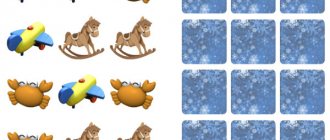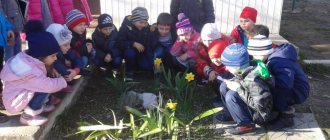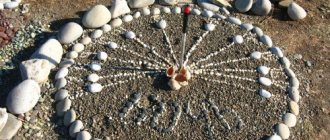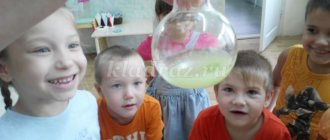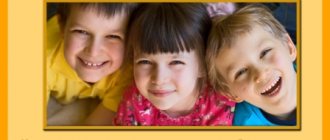First, you need to answer the question for yourself: is a small child really ready to learn to dance? Most children respond to the sound of music with joy and enthusiasm. Moving to music is a great way to develop children's understanding of dance and their understanding of music.
Although your child may seem ready to learn, most dance schools require children to be at least three years old. Classes for children aged three to five years, dance classes are usually called "creative movement" or "preparatory" classes. Many schools offer mommy and me dance classes, giving parents the opportunity to attend classes with their children.
If parents want to introduce their child to music and dance, they should not hesitate to sign up for professional classes. With a little imagination and creativity, you can create a fun and stimulating dance lesson from the comfort of your own living room. The following ideas will help your child develop fine and gross motor skills as he or she balances, jumps and moves. It's worth playing some fun music and showing your child some simple dance terminology with basic foot, arm and body positions.
Exercises for kids
Stretching
Most babies are amazingly flexible. Since flexibility decreases with age, teaching your child to stretch their body at an early age can encourage them to remain flexible in the future.
Simple stretches for kids:
- touching your toes: you need to show how to sit on the floor and reach for your toes (without bending your knees); - leg extension: you need to show the baby how to lie on one side and keep one leg in the air (without bending your knees and stretching your “toes”); - spreading the legs: ask the baby to sit on the floor with his legs spread in the legs apart position (there is no need to force the achievement of a perfect split).
Baby skipping and jumping
Kids love challenges. Since jumping and skipping are skills to master, your child will surely enjoy trying to get their feet off the floor.
Creative ideas for jumping:
- friendly frogs: you need to tell the child to pretend to be a frog and jump around the room on all fours; - babies: let your child pretend that he is a kangaroo, while you need to demonstrate to him how to jump off the floor with both feet; - popcorn: let the child imagine that he is a grain of popcorn that is about to burst inside the microwave. You need to count to three together and then start jumping around like freshly baked corn kernels.
Learning to March
If your baby likes to stomp his feet, you need to show him how to walk like a soldier. Marching is one of the early skills taught in a beginner's lesson. Let your child focus on lifting his legs as high as possible.
Learning to reach out
By raising your child's arms high, you can teach him to stretch and “lengthen” his body. He should be encouraged to keep his hands like this for as long as possible.
Creative examples of exercises:
Trees in the wind: You can tell your child to imitate a tree swaying in the wind by showing him how to raise his arms high above his head and sway back and forth. Flower garden: Let the child pretend that he is a flower that should grow and bloom in the garden. When the sun rises, its petals open and its stem reaches towards the sky. Let your hands be leaves, rising high and reaching towards the sky.
Consultation “Teaching dance to preschoolers”
One day a man came to a sage and said to him: “O Sage, teach me to distinguish truth from lies, beauty from ugliness. Teach me the joys of life." The Sage thought and... taught the Man to dance.
Dance is a synthetic art. It is aimed at solving the musical-rhythmic, physical, aesthetic and mental development of children. Movements to music accustom them to collective action and help foster a sense of collectivism, friendship, camaraderie, and mutual respect.
Currently, the attention of children and teachers is attracted by modern rhythms of music and new dances. But sometimes you have to deal with the fact that children, watching adults dance in everyday life, imitate the worst examples of their performance (they make faces, break, dance rudely, unmusically). This causes great concern, since it is in preschool age that the foundations of artistic and musical taste are laid.
It is easier for children to convey their understanding of music not through words, but through movements. And this is a good prerequisite for the creative process.
To teach a child to convey the character of a musical work, its figurative content through the plasticity of movements to music - this is exactly what the work on dance is aimed at.
By acquiring knowledge and skills in the field of dance art, children begin to understand that each dance has its own content, character, and image. To convey the expressiveness of dance images, the child must remember not only the movements themselves, but also their sequence (which in itself has a positive effect on the development of memory and attention), but also mobilize imagination, observation, and creative activity.
Types of dances
- dances and dances with fixed movements, the construction of which is determined by the structure of the musical work;
- free dances and dances , in which the creative abilities of the performers are most clearly manifested;
- combined dances , including fixed movements and free improvisation;
- folk dances and dances based on authentic elements of folk dance;
- character dances performed by various characters;
- children's ballroom dancing , including polka steps, gallop, waltz movements and others.
Creation of children's dances
The first way is to work on lightweight versions of existing dances for adults, accessible to children, using the same music. They preserve the dance movements for adults and its pattern, but reduce the number of figures, simplify the composition, and eliminate the most difficult elements for children to perform.
Another way is to create a new children's dance based on music that children like and that is suitable in terms of musical structure and form. Such dances include program dance skills required for preschoolers (springs, hops, galloping steps, side steps, rhythmic claps, etc.), many of which are performed in a new modern manner. At the same time, new elements are introduced.
Methodical techniques
Display method: involving display (joint execution of movements), advanced display, fragmentary display.
By showing children movements, the teacher gives them the opportunity to see the artistic embodiment of the image.
Verbal method. Spoken speech is the link between movements and music.
Verbal explanations should be brief, precise, figurative and specific. It is also necessary to pay attention to intonation and the force with which the word is spoken.
Words are symbols denoting movements: “sun”, “house”, “balls”, “tails”.
Gestures with spoken words that reveal the meaning of this gesture: “why are you sitting here”...
Illustrative visualization method. A full-fledged activity cannot take place without a story about dances, their history and diversity, without introducing reproductions, book illustrations, photographs and videos. Hall markings. Schemes-cards.
Game method. The essence of the play method is that the teacher selects toys for children that help in learning. Toys ( attributes ) decorate the dance and have a great influence on its performance. Captivated by the toy, children stop fixating their attention on the technical features of the dance. Transformation games will help teach children to perform expressive movements and develop their imagination and creativity.
Concentric method. This method consists in the fact that the teacher, as the children master certain movements and dance compositions, returns to what they have learned, but can now offer a more complicated version.
Showing children performing this or that movement well.
Stages of learning musical-rhythmic movements
Stage I – initial training in new musical movements; Stage II – in-depth learning; Stage III – consolidation and improvement of musical and rhythmic movements.
Training at the first stage is aimed at creating in children a general understanding of the new movement in connection with music. To interest children in dance, the teacher must give a general description of the dance and note its features. Listening to dance music, understanding its content and features, and analyzing its structure (individual parts, musical phrases) is of great importance. Children can be asked to clap accents, rhythmic patterns, the beginning of a new part, or a musical phrase.
The main actions of the teacher at the first stage of training:
- explanation;
- expressive performance;
- demonstration of a new dance movement by the teacher, corresponding to the content of the music.
At the second stage of training, as a result of the active work of the teacher and children (in small groups and individually), mastery of basic movements in conjunction with music occurs.
The teacher analyzes in advance what mistakes children may encounter when mastering a particular movement, finds the exact words to explain individual details, thinks through figurative comparisons, clear brief instructions, and uses preparatory dance exercises.
Children can stand scattered or in a general circle, in this case they can clearly see the teacher’s demonstration (no one stands with their back or side to him), and the teacher, in turn, has the opportunity to control the quality of movements. If children stand scattered, the teacher’s display should be mirrored.
The teacher must constantly monitor the children’s movements in accordance with the tempo, rhythm, dynamic shades of music, correct mistakes, and encourage them.
The main features of a developed musical motor skill are the conscious execution of movements in accordance with the nature of the music and the quality of execution (accuracy, rhythm, expressiveness).
At the third stage , the task is to bring the skills acquired by children in musical and rhythmic movement to the degree of independent creative performance and use of dances and games in everyday life. Children approach independent creativity gradually, through feasible or creative tasks, which are offered in sequence from simple to more complex.
Stages of learning exercises:
1. Verbal explanation by the teacher, then demonstration of the exercise by the teacher accompanied by musical accompaniment. 2. Learning complex movements (“variable step”, “polka step”...) according to
in parts, first to the count, then to the music. 3. Show a child who has mastered this exercise. 4. Reinforcement of the exercise by all children in subsequent classes. 5. Assessing the children’s performance of the exercise.
Dance - improvisation
Dance improvisation is a way to develop creative abilities and nurture creativity in preschoolers. Children are characterized by a rich imagination and imagination. Therefore, games, free improvisations, plastic performances arouse their interest and enthusiasm, and are performed easily and naturally. Such exercises should be performed by children in classes throughout the year.
“Choreography implies “ownership” of the body; the body in this case is the object towards which the action is directed.
Improvisation involves co-creation with the body, recognition of the equal importance of pre-formed plans and experiences, and momentary impulses. For improvisation, you need a feeling and “thinking” body, something that was present in ancient cultures based on the idea of “unity with nature” - Grishon A.E.
Feelings of body freedom contribute to the development of the ability to improvise.
In classes with preschoolers, several areas for developing the ability to improvise can be distinguished:
1. Feeling of the “body”.
2. Communication with a partner - partnering.
3. Understanding movement in creativity: drawing, crafts….
4. A set of movements to create a basic basis for improvisation.
, musical sketches provide invaluable assistance for example from E. Gorshkova’s methodology “From Gesture to Dance” (“Met”, “In the Forest”, “Let’s Be Friends”, “Secret”). And also studies on the expression of emotions, on the reproduction of individual character traits, on the training of individual muscle groups by M. Chistyakova from her book “Psychogymnastics”. For example, such as “Barbell”, “Icicle”, “Everyone is Sleeping”, “Different Moods”, “Sentry”, “Fear”, etc. In them, children learn with interest to communicate with each other using the language of movements, to convey in plastic various emotional states that are close to them from their own life experience.
It is useful to use communicative, character and plot improvisations with poetic or prose accompaniment.
Communicative dance is a dance with simple, light, playful components, and evokes a lot of positive emotions in children (Briske’s Dance “For me, for you,” Zheleznov’s disc: “Dwarfs and Giants.”)
Characteristic dances: of a character (Zheleznov’s “Three Little Bears”).
Logorhythmic exercises: “Cat’s house”, “The cat inflated the ball”.
Then, when children get used to this kind of tasks, improvise freely and naturally, show creative independence and activity, you can introduce free improvisations with objects (Briske dance with hoops “To the village to visit grandma”: sun, hat, skirt, house.)
The main requirement for dance improvisation is that each improvisation is performed only once, since if the composition is repeated, it loses the character of creativity and improvisation.
Game "Body Parts". We study body parts. After getting to know each other, you are given the task to move (dance) a certain part of the body. The movements are based on improvisation. At the next stage of the game, the tasks become more complicated: speed and movement dynamics are added.
Exercise "Mirror". Children look in the mirror, “make faces”, developing facial muscles, then the task becomes more complicated, the child must convey these facial sensations without looking in the mirror. In this way, internal sensations develop. An option to complicate the game: children become pairs: one depicts a mirror, the second a reflection. The task is to make the mirror and reflection unrecognizable.
It is important to create a comfortable atmosphere in the team, teach children to communicate with each other, and trust each other.
Game "Partnership". Children become pairs (the teacher first observes who is in contact with whom), one in the pair closes his eyes, completely trusting his partner, who sends impulses to the partner’s back with his palm, directing his movement. The task of the second is to guide the partner without clashes, the first is to completely trust the partner.
"Imagine who you are" technique . Children close their eyes. The teacher gives the task to imagine yourself as a bird. A story about what kind of bird it is helps the child imagine it in his imagination. The performances then need to be shown in motion. Observation of natural phenomena stimulates imagination and moves towards improvisation. It is necessary to give the task more often: observe a phenomenon, animal, object, and then talk about it in class.
Game "Word Action". The teacher names the quality of movement. For example: a tree is swinging (swaying), a sweet toffee (stretching), we are rolling a roll (twisting), we are late (walking, running). To complicate the exercise, you can independently compose stories based on your experience. Mastering the technique broadens the child’s horizons.
The game "Silent" requires a little experience in movements. Goal: carefully monitor the changing movements of the teacher, who is silent and makes them as he moves around the hall, and repeat the movements. The result can be very unexpected: children, carried away, actively enter into the process and begin to independently compose movements, as if not noticing everyone around them; this is an excellent result in the development of the ability to improvise in preschoolers.
Not all children succeed in completing tasks, because we are talking about creativity, which requires choreographic talent and talent. Children who did not get the expected result have their own reasons: personal, psychological, etc. And yet, for them, the techniques used are also useful in terms of art therapy.
“Of all the feelings, joy has the best influence on the development of a child’s abilities; he most willingly surrenders to this feeling and his soul is open to educational influence” Emile Jacques-Dalcroze.
Literature:
1. Grishon A.E. Improvisation and choreography [Electronic resource] - Access mode. — URL: https://www.girshon.ru/index.php/moi-stati/articles/improvizacija-i-xoreografija.html (access date 08/12/2013).
2. Literature and language: modern illustrated encyclopedia [Text] / Ed. A.P. Gorkina. M.: Rosman, 2006. - 584 p.
3. Samukina N.V. Games at school and at home: psychotechnical exercises and correctional programs [Text] / N.V. Samoukina. M., 1993. - 144 p.
4. Churilova E.G. Methods and organization of theatrical activities for preschoolers and primary schoolchildren [Text]: Program and repertoire / E.G. Churilova. M., 2001. - 160 p.
Dance positions for kids
It's never too early to start learning the five basic dance positions. Your baby may be able to put his feet in first and second position, but don't expect too much just yet. Small legs are difficult to position “right.”
You can take a small chair for the child to make it easier for him. It’s worth starting from the first position: putting the child’s heels together and turning his toes to the sides. After this, you need to see how long the baby can hold this position. As he grows up and learns to control his legs better, you can move on to other positions. Pretty soon he'll learn all five.
Plie for babies
Most likely, the baby will be able to bend and straighten his knees. In dancing, bending the knees is called plie. To begin with, let the child bend only halfway to the floor, then you can show him a real plie.
The benefits of dance for children
Dancing classes are very important for the development of a child. With the help of dance, he will splash out emotions and also improve his health. During dance movements, the body gets an excellent workout. Regular dance classes help develop your hearing and sense of rhythm.
The most important thing is that the child wants to dance. — It is necessary to build on his desires. Because if you put pressure on children and force them, they lose the desire to do anything.
It is necessary to instill a love of music from birth. — Very young children can be picked up and spun around to a pleasant, cheerful melody. “This will help them train their vestibular apparatus. It is also important that beautiful musical compositions are periodically played in the house - this will put your baby in the mood for dancing.
Dancing to the music
Once you have learned a few simple dances, you need to start dancing to music. By this point, the baby will warm up his muscles and it will be much easier for him to move. It’s possible that he won’t be able to get into the rhythm the first time, but don’t be upset - after a few training sessions he’ll be able to easily get into it. Try using several musical compositions for one dance. Because the wrong music can ruin everything.
Let your little one experiment and move to the music the way they want. At first, of course, he will play around and rush around the apartment, but very soon he will get tired of it and he will start trying.
You too can take part in his game and keep him company. For example, take bright ribbons and turn on light, not very rhythmic music. Then spin around with your baby waving the ribbons. You'll see, he will try to get in time with the music, and this is excellent training before dancing.
Before sending your child to a dance school, you should definitely practice at home. Only you can instill in your child a sense of rhythm and style from childhood. Therefore, be patient and work with your baby. It is possible that in the future he will grow into a professional dancer who will delight the whole world with his creativity. Who knows!
Remember the “Dance of the Little Ducklings” and dance with your children:
How and where to start?
- You can start from the moment when the baby holds his head well. And slowly, with him in your arms, you can make the first curtsies. Then you can take his hand in yours and spin around like in partner dances. Then it can be waves - you can hold the baby in different positions and rock him a little. Smile at him and hum. These are the very first dance lessons.
- It is better to choose daytime hours for classes, since children get overexcited very quickly and may have difficulty falling asleep or sleep restlessly after active activities.
- Choose the right time. The child is well-fed and in a good mood. But if he is distracted by some important activity, such as putting out candy wrappers, I don’t know if you can tear him away from it. Maybe you turn on the music and he will drop everything himself. In general, look at the situation.
- If your child suddenly refuses to do something, don’t force him, put it off until later.
- Of course, to dance at home, you will have to make room for it. So that the child can spin around, and squat, and wave his arms and not run into the furniture.
- Start dancing yourself and call your baby, kids usually agree with pleasure.
- Then later you can introduce so-called musical instruments into your activities - these can be wooden spoons, maracas, bells and whatever the child desires.
How to choose the right music for dancing
If you are thinking about how to teach your child to dance at home, then you should have a wide variety of musical compositions at your disposal. Because before starting classes, you must understand which melody is suitable for your baby at the moment. — It’s not difficult to do this, just pay attention to the character of your baby:
- If your child is mobile, active, constantly coming up with something and does not sit still. That, and the dancing must be appropriate. — You should opt for a cheerful, rhythmic composition to which the child can easily move.
- If, on the contrary, the baby prefers quiet games and spends more time doing sedentary activities, then the melody should be appropriate. - Smooth, calm, for example, a waltz.
- The ideal solution for any occasion would be to choose classical music. — You can move to any rhythm to it, and plus, you will introduce your child to high art.
- For very young children, children's songs are suitable. They are funny and simple; you can have fun and learn simple dance moves to these tunes.
